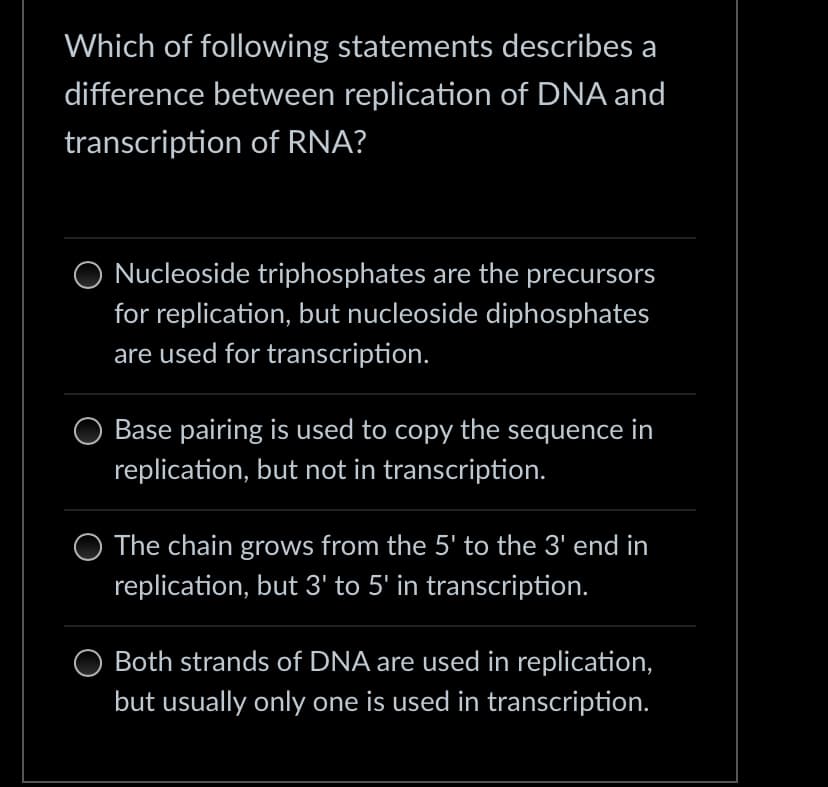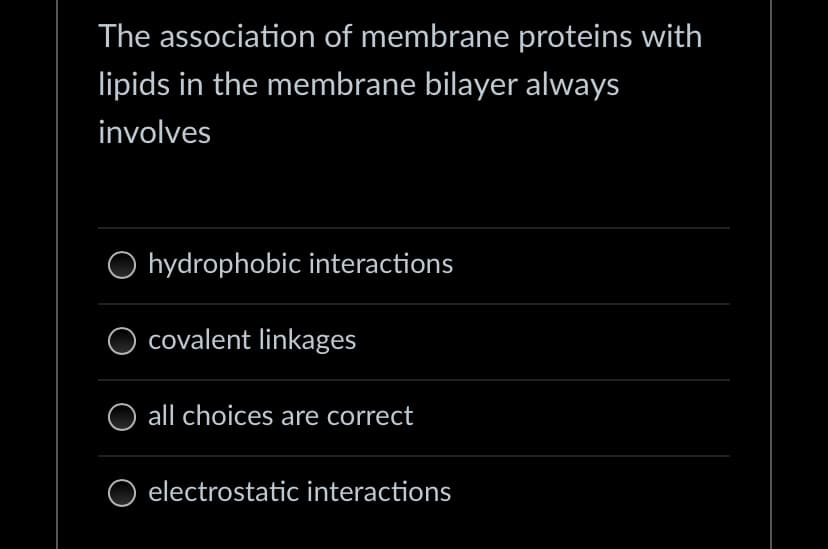Which of following statements describes a difference between replication of DNA and transcription of RNA? Nucleoside triphosphates are the precursors for replication, but nucleoside diphosphates are used for transcription. Base pairing is used to copy the sequence in replication, but not in transcription. O The chain grows from the 5' to the 3' end in replication, but 3' to 5' in transcription. Both strands of DNA are used in replication, but usually only one is used in transcription.
Which of following statements describes a difference between replication of DNA and transcription of RNA? Nucleoside triphosphates are the precursors for replication, but nucleoside diphosphates are used for transcription. Base pairing is used to copy the sequence in replication, but not in transcription. O The chain grows from the 5' to the 3' end in replication, but 3' to 5' in transcription. Both strands of DNA are used in replication, but usually only one is used in transcription.
Concepts of Biology
1st Edition
ISBN:9781938168116
Author:Samantha Fowler, Rebecca Roush, James Wise
Publisher:Samantha Fowler, Rebecca Roush, James Wise
Chapter3: Cell Structure And Function
Section: Chapter Questions
Problem 11RQ: The tails of the phospholipids of the plasma membrane are composed of _____ and are _____? a....
Related questions
Question

Transcribed Image Text:Which of following statements describes a
difference between replication of DNA and
transcription of RNA?
Nucleoside triphosphates are the precursors
for replication, but nucleoside diphosphates
are used for transcription.
Base pairing is used to copy the sequence in
replication, but not in transcription.
O The chain grows from the 5' to the 3' end in
replication, but 3' to 5' in transcription.
Both strands of DNA are used in replication,
but usually only one is used in transcription.

Transcribed Image Text:The association of membrane proteins with
lipids in the membrane bilayer always
involves
hydrophobic interactions
O covalent linkages
all choices are correct
electrostatic interactions
Expert Solution
This question has been solved!
Explore an expertly crafted, step-by-step solution for a thorough understanding of key concepts.
Step by step
Solved in 3 steps

Recommended textbooks for you

Concepts of Biology
Biology
ISBN:
9781938168116
Author:
Samantha Fowler, Rebecca Roush, James Wise
Publisher:
OpenStax College

Concepts of Biology
Biology
ISBN:
9781938168116
Author:
Samantha Fowler, Rebecca Roush, James Wise
Publisher:
OpenStax College